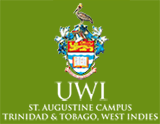Facilities
The Department has supporting specialist research laboratories in Biotechnology and Tissue Culture, Entomology, Environmental Biology, Ecology, Parasitology, Ecotoxicology, Biosystematcs, Biochemistry, Histology, Microbiology, and Aquaculture and Fisheries. The Department also maintains the Natonal Herbarium, Zoology Museum, and several greenhouses.
 Aquaculture and Fisheries Research Laboratory
Aquaculture and Fisheries Research Laboratory
This laboratory is located on the ground floor on the southern end of the Natural Sciences building. The facility includes a recirculating seawater and freshwater system, and numerous aquaria of varying sizes for culturing fish, shellfish and algae, and for research in fish behaviour. Aeration is provided via air-blowers. Incoming water is passed through ultra-violet filters. There is photoperiod and temperature control.
 Histology Research Facility
Histology Research Facility
 Biochemistry Facility
Biochemistry Facility
Research is currently focused on investigations into the biological effects of extracts from local 'medicinal' plants, the incidence and nature of MODY (maturity-onset diabetes of the young) in the Caribbean region, glucose-6-phosphate dehydrogenase activity in the local diabetic population, and specific aspects of the blood-clotting process, with particular reference to the role of plasminoge.
 Greenhouse Facility
Greenhouse Facility
The Department of Life Sciences maintains a large research greenhouse, a shade house and a controlled environment room. The greenhouse is fitted with adjustable shade cloth, automatic misting and controlled irrigation. In addition, the surrounding grounds hold a collection of local plants used in undergraduate and postgraduate teaching. These facilities support the work of several research groups, including: Plant Breeding with the Anthurium group Plant Conservation with the Aripo Savannas Biodiversity group Plant Pathology with the Plant-Microbe group Forest Restoration with the ProEcoServ group
 National Herbarium of Trinidad and Tobago (TRIN)
National Herbarium of Trinidad and Tobago (TRIN)
The Herbarium occupies seven rooms in the Sir Frank Stockdale Building. There is the main room 200 (Herbarium) where the plant collections are housed in a well-maintained, temperature-controlled environment. The herbarium library occupies its own space in room 46. There is a preparation room (Room 39) where specimens are processed, treated and mounted, or frozen periodically at sub-zero temperatures for insect control. The Administrative offices are occupied by the Curator (Room 38) and the Senior Secretary (Room 48). Room 50 serves a dual purpose as a sick bay and a secondary laboratory. The seventh, Room 47, is the drying and storage room.
 The Biotechnology Research Centre
The Biotechnology Research Centre
The Research Centre presently has five faculty and seven postgraduate students. Research is carried out in the areas of micropropagation and transformation of tropical crops; genetic diversity of tropical tree species, plant pathogenic viruses, bacteria, and fungi; the molecular biology of plant pathogenic organisms.
 Zoology Museum
Zoology Museum
The museum provides a number of services to the University community, the general public of Trinidad and Tobago, the governments and peoples of the region, and visitors to the Republic of Trinidad and Tobago. Identification - Animal specimens either alive or dead or as photographs can be brought in to the museum to be identified to as accurate a level as possible. Educational Tours - Tours of the Zoology Museum can be booked for anytime from Monday to Friday between 8am and 4pm.






